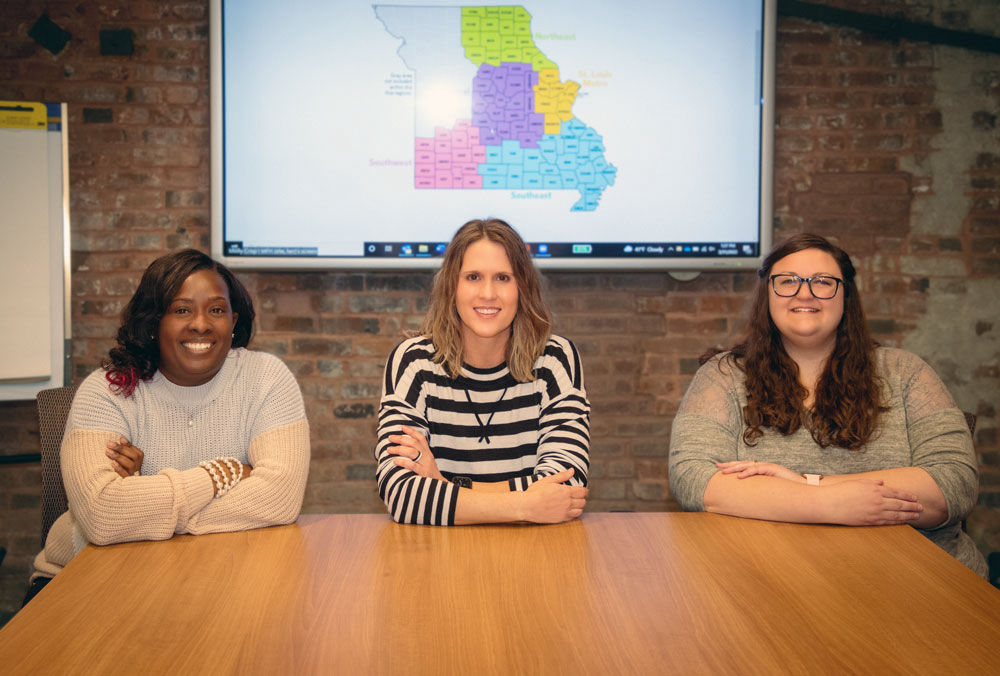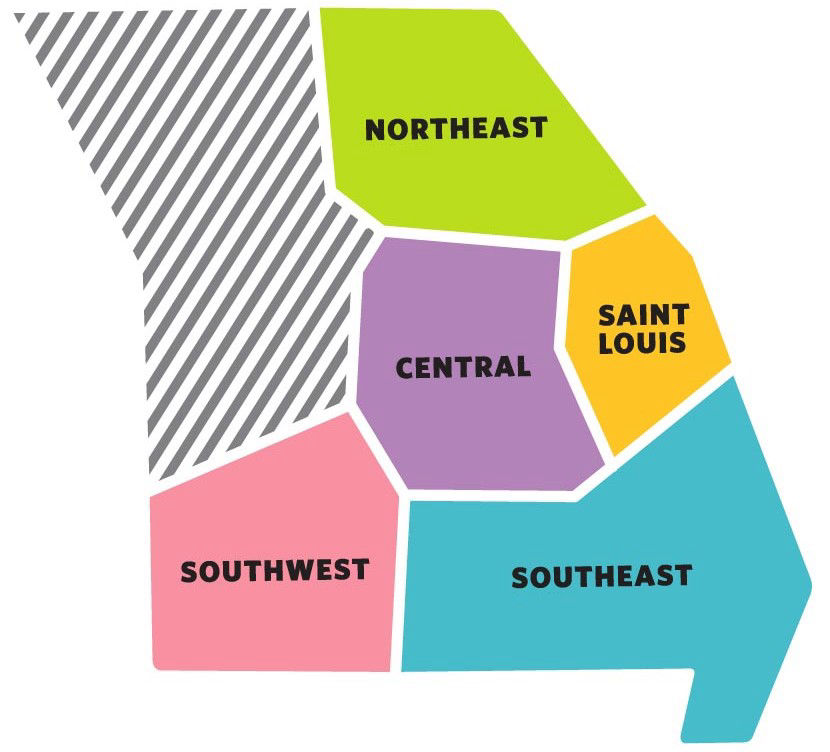
Teletia Atkins, Sarah Morrow, and Chelsea Zabski
At Missouri Foundation for Health, we’re always focused on how we can better engage communities. Connecting with those who live and work in the areas where we are seeking to drive change helps to inform our work on various levels and is an important element in our journey to achieve health equity. However, being located in St. Louis while serving 84 additional counties around the state poses some challenges in doing so. That’s why when Foundation staff had an aha moment a few years ago we decided to test a novel concept by adding a community liaison to help foster relationships in other parts of the state.
Sarah Morrow, who was a health policy officer at the time, transitioned into this newly designed position and moved back west where she lived for most of her life prior to coming to MFH. Building on her previous roles at various nonprofit organizations allowed her not only to tap into her vast network but also to relate, on a deeper level, to people she met.
“Being in the shoes of a nonprofit, understanding what it’s like working for one, and just the daily stressors of what you're trying to achieve as a nonprofit has been helpful for putting me in the right frame of mind when meeting with folks,” said Morrow. “It gives you a different perspective.”

Teletia Atkins, Sarah Morrow, and Chelsea Zabski
Driven by the principle that you should never build a relationship only when you need it, Morrow spends her time getting together with diverse groups of people from schools, health departments, nonprofits, businesses, and others who are passionate about improving the health of Missourians. She sees herself as a conduit funneling information, making connections, and most importantly, being a trusted partner in the region.
This pilot position has been successful at enhancing the Foundation’s understanding of how we think about complex health and social challenges, and, in some instances, what issues we’re talking about; so much so that the Foundation recently added two more community liaisons to expand outreach in Northeast and Southeast Missouri.
Whether they’re attending town halls, coalition meetings, convenings, or getting acquainted with individuals who are interested in working to transform systems, the community liaisons are meeting people where they’re at – both literally and figuratively. Chelsea Zabski, who covers parts of Central and Northeast Missouri, is excited to serve as a personal touchpoint and resource connector.
Teletia Atkins, who works in the Southeast region, has been busy traveling to surrounding communities. She says a recent trip to Salem underscored the advantage of having someone from a rural community visiting smaller cities and towns.
“When someone comes in from St. Louis, the perception is they don’t understand the dynamics here and that can deter someone from opening up,” said Atkins. “When I am meeting with people, I want them to know I’m here to listen so they can feel comfortable being themselves. Having someone in the field who grew up in the area helps with building relationships.”
This relationship-based learning role flips the traditional philanthropic model on its head. In many foundations, program staff conduct site visits with grantees or scout for programs to fund which can make interactions feel one sided and seem transactional. This power imbalance can inhibit productive, meaningful conversations and blur lines.

Centering learning, rather than funding, in community engagement is essential to creating trust and opportunities for sharing. Through this approach, we’re hearing firsthand about what communities are experiencing and challenges they face. From there, we’re able to uncover commonalities or dig further into unique circumstances impacting different places. This all feeds into our strategy as we work to eliminate the underlying causes of health inequities.
Connecting with communities is bigger than any one of us here at the Foundation. It is woven into every aspect of our work and achievable through authentic partnerships and honest conversations. We’re grateful for those who contribute to our growing base of discoveries and insights, shaping how we think and strengthening what we do.
“I have the best job. I get to spend my day meeting with amazing people and learning about the incredible work taking place across our state,” said Morrow. “I enjoy bringing all the pieces together, identifying overarching themes, and providing context to what’s happening in my community.”
Designed with Mobirise
Free Web Page Creator